Hydraulic Brake System Bleeding Manual
Caution: Refer to Brake Fluid Caution in the Preface section.
Caution: Refer to Brake Fluid Irritant Caution in the Preface section.

- Fill the master cylinder reservoir with
brake fluid. Keep the reservoir at least half full during the bleeding procedure.
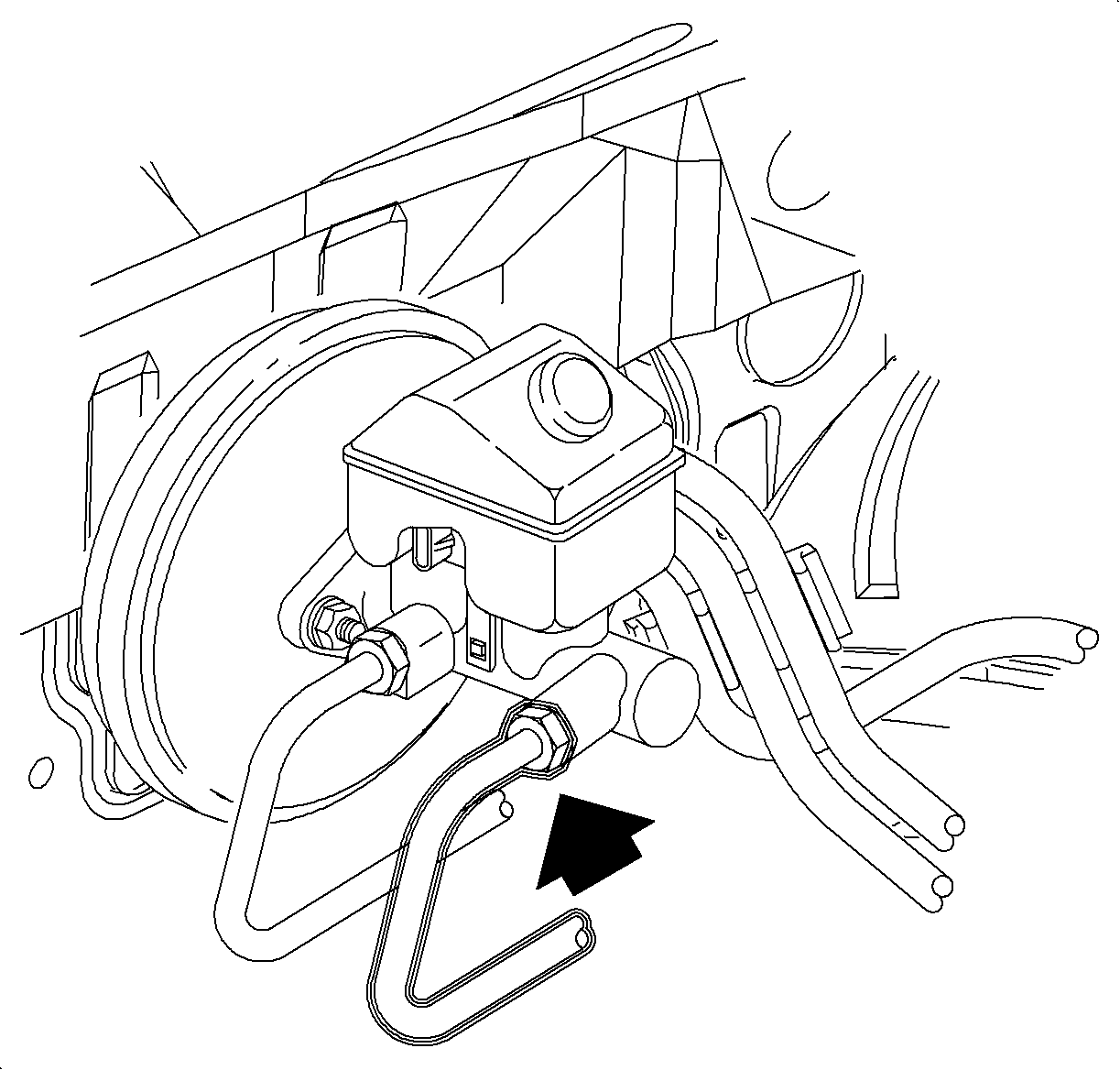
- If the master cylinder is suspected of having
air in its bore, it must be bled before proceeding to brake line bleeding.
- Loosen the front brake pipe at the master cylinder.
- Allow the brake fluid to flow from the front master cylinder port.
- Tighten the front brake pipe into the master cylinder.
- Loosen the front brake pipe on the master cylinder 1/4 turn.
- Depress the brake pedal slowly until fluid is seen coming from the pipe
fitting.
- Tighten the front brake pipe into the master cylinder, while the pedal
is being depressed.
- Slowly release the pedal.
Notice: Refer to Fastener Notice in the Preface section.
- Repeat the sequence until all the air is removed from the front, secondary,
master cylinder bore and tighten the brake pipe-to-master cylinder nuts.
Tighten
Tighten the brake pipe-to-master cylinder nuts to
16 N·m (12 lb ft).
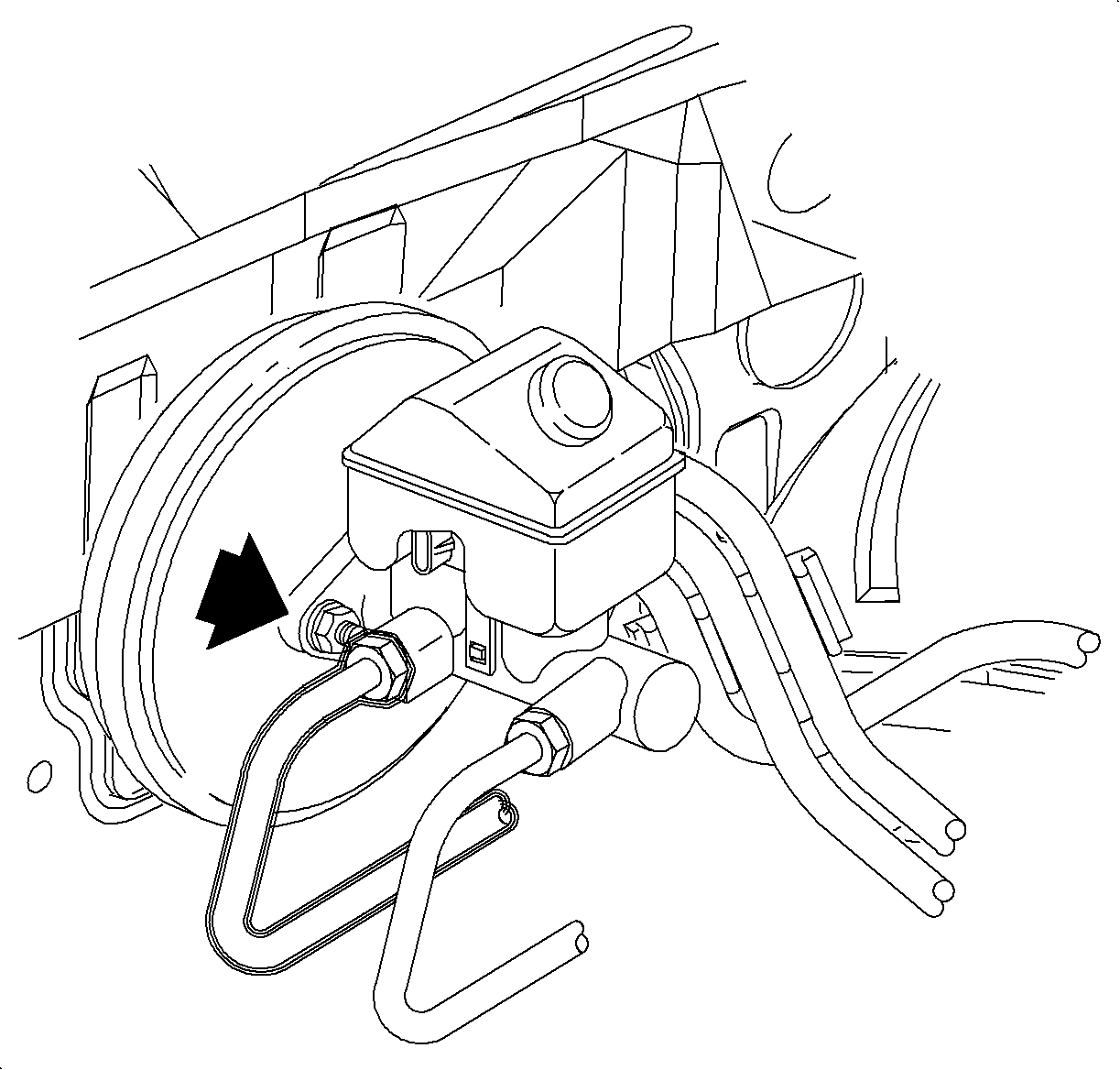
- Loosen the rear brake pipe, rear port, at
the master cylinder.
- Allow the brake fluid to flow from the rear master cylinder port.
- Tighten the rear brake pipe into the master cylinder.
- Loosen the rear brake pipe at the master cylinder 1/4 turn.
- Depress the brake pedal slowly until fluid is seen coming from the pipe
fitting.
- Tighten the rear brake pipe into the master cylinder while the pedal is
being depressed.
- Slowly release the pedal.
- Repeat the sequence until all air is removed from the rear, primary, master
cylinder bore and tighten the brake pipe-to-master cylinder nuts.
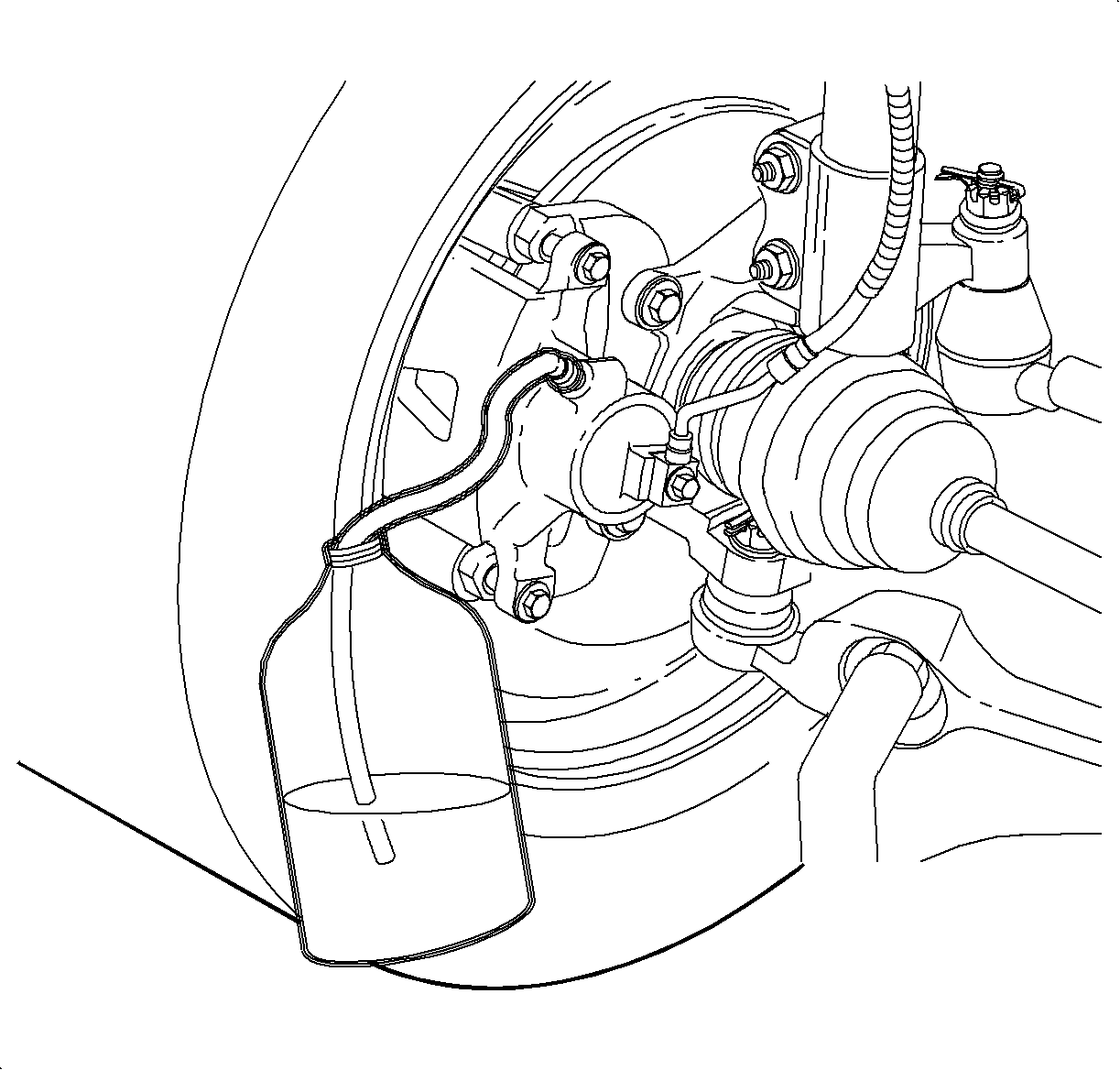
Important: To assist in freeing trapped air, tap lightly
on the caliper casting with a rubber mallet.
- Bleed the individual calipers and wheel cylinders.
| 19.1. | Place the wrench over the bleeder screw. |
| 19.2. | Attach a transparent hose over the bleeder screw nipple. Submerge the
other end of the hose in a transparent container of brake fluid. |
| 19.3. | Loosen the bleeder screw. |
| 19.4. | Apply the brake pedal slowly and hold. |
| 19.5. | Tighten the bleeder screw. |
| 19.6. | Release the brake pedal. |
| 19.7. | Repeat the sequence until all air is removed from the brake pipes and
tighten the bleeder screw. |
Tighten
Tighten the front caliper bleeder valves to 8 N·m
(71 lb in).
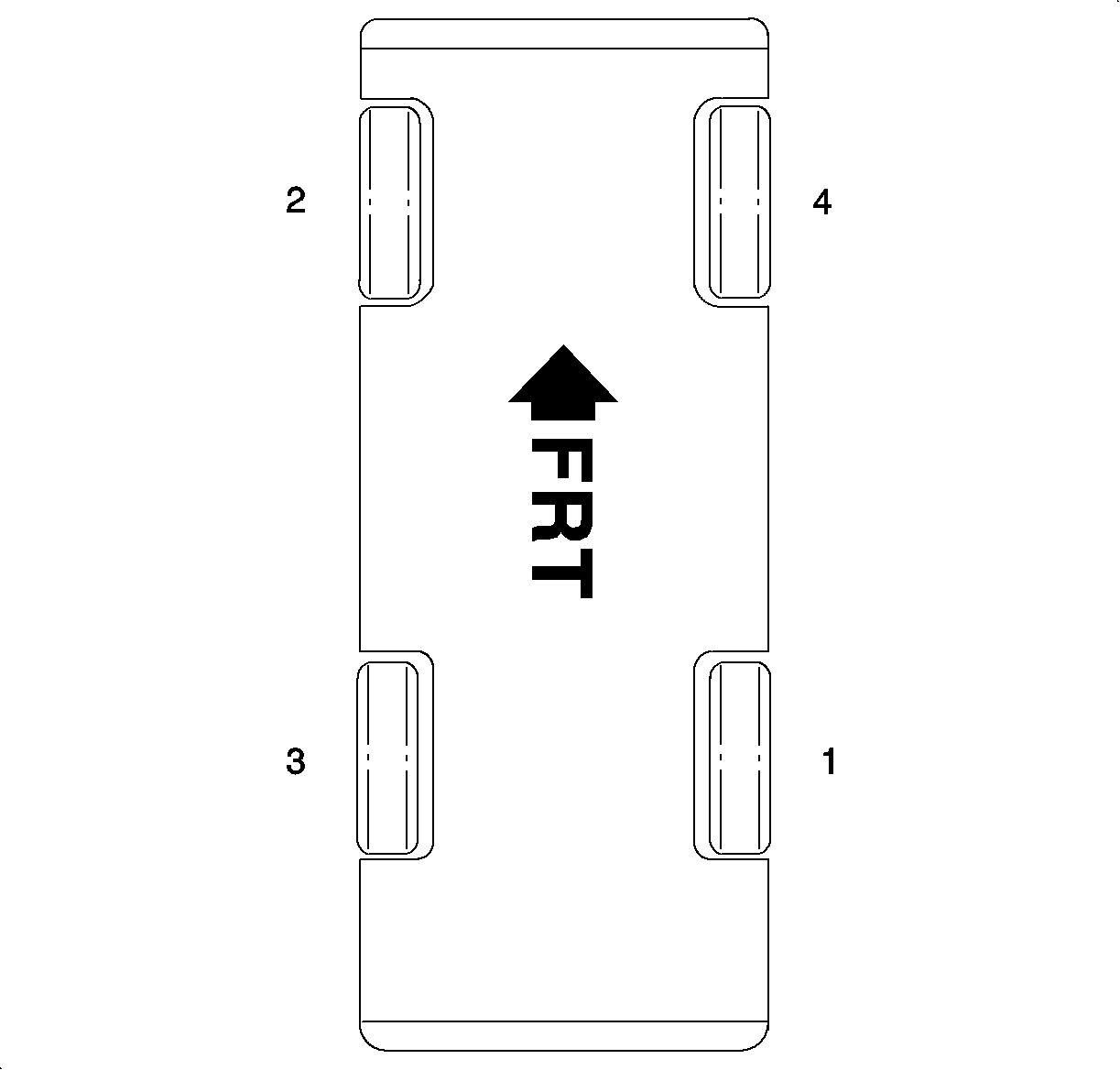
- If more than one brake pipe is being bled, bleed in the following sequence:
- Inspect the brake pedal and feel for sponginess. If the brake pedal exhibits
this feel, repeat the bleeding procedure until the condition disappears.
- When the bleeding procedure is completed on each wheel, inspect the reservoir
fluid level. Fill as necessary.
- Inspect for leaks with the engine running and the brakes applied.
Hydraulic Brake System Bleeding Pressure
Tools Required
Caution: Refer to Brake Fluid Caution in the Preface section.
Caution: Refer to Brake Fluid Irritant Caution in the Preface section.
Notice: Pressure bleeding equipment must be of the diaphragm type. It must have a rubber
diaphragm between the air supply and the brake fluid to prevent air, moisture, and
other contaminants from entering the hydraulic system.
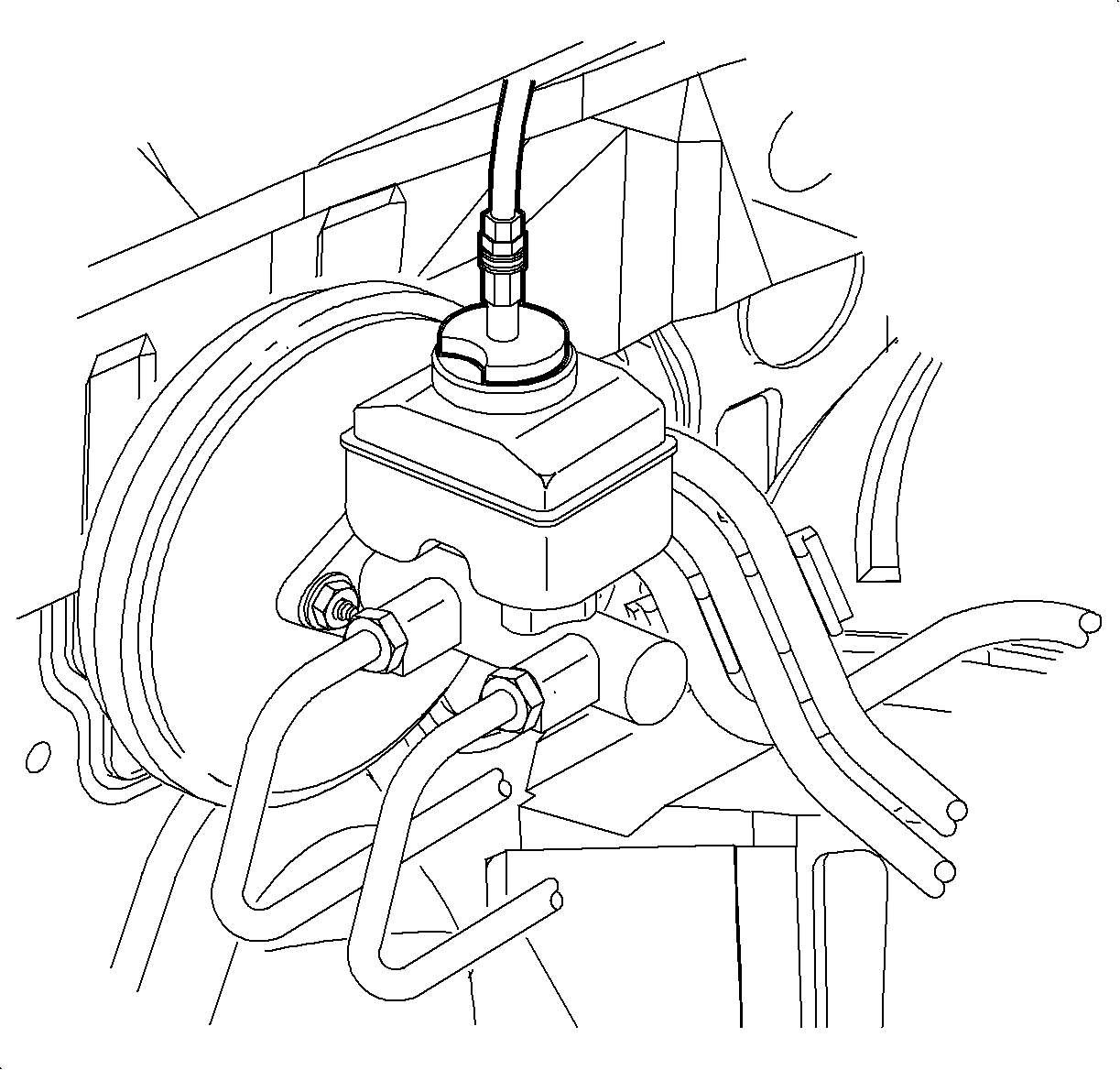
- Clean the brake fluid reservoir cap and
the area around the cap.
- Remove the brake fluid reservoir cap.
- Fill the master cylinder reservoir with clean DOT-3 brake fluid.
- Install the J 43915
,
or equivalent, to the brake fluid reservoir.
- Connect the J 29532
to
the adapter.
- Pressurize the bleeder equipment to 138-172 kPa (20-25 psi).

- If the master cylinder is suspected of having
air in its bore, it must be bled before proceeding to the brake line bleeding.
- Loosen the front brake pipe at the master cylinder.
- Allow brake fluid to flow from the front master cylinder port until all
the air is removed from the front master cylinder bore.
Notice: Refer to Fastener Notice in the Preface section.
- Tighten the front brake pipe into the master cylinder.
Tighten
Tighten the brake pipe-to-master cylinder nuts to
16 N·m (12 lb ft).

- Loosen the rear brake pipe, rear port at
the master cylinder.
- Allow brake fluid to flow from the rear master cylinder port until all
the air is removed from the rear master cylinder bore.
- Tighten the front brake pipe into the master cylinder.
Tighten
Tighten the brake pipe-to-master cylinder nuts to
16 N·m (12 lb ft).

Important: To assist in freeing trapped air, tap lightly
on the caliper casting with a rubber mallet.
- Bleed the individual calipers and wheel cylinders.
| 14.1. | Place the wrench over the bleeder screw. |
| 14.2. | Attach a transparent hose over the bleeder screw nipple. Submerge the
other end of the hose in a transparent container of brake fluid. |
| 14.3. | Loosen the bleeder screw and allow the fluid to flow into the container
until all the air is removed. |
| 14.4. | Tighten the bleeder screw. |
Tighten
Tighten the front caliper bleeder valves to 8 N·m
(71 lb in).

- If more than one brake pipe is being bled, bleed in the following sequence:
- Check the brake pedal and feel for sponginess. If the brake pedal exhibits
this feel, repeat the bleeding procedure until the condition disappears.
- When the bleeding procedure is completed on each wheel, check the reservoir
fluid level. Fill as necessary.
- Check for leaks with the engine running and the brakes applied.










